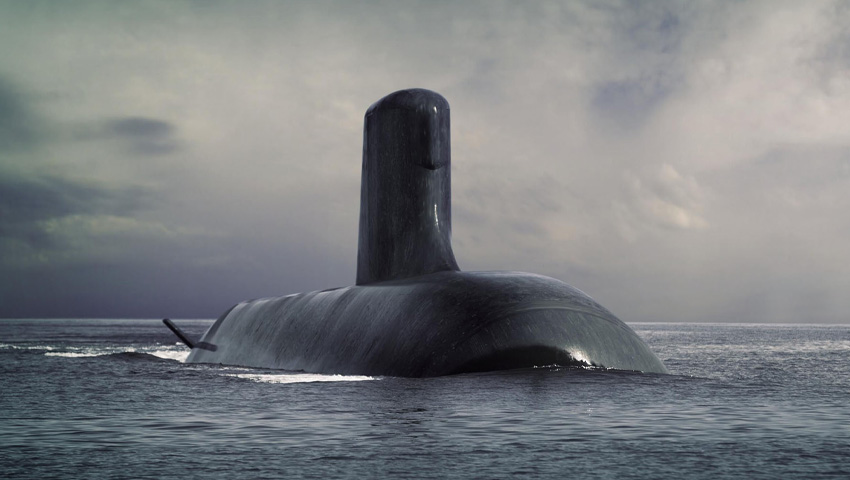The Dutch Ministry of Defence has confirmed Naval Group, Saab and ThyssenKrupp Marine Systems (TKMS) as the successful candidates for the next-stage of the Royal Netherlands Navy’s Walrus Class submarine replacement program.
The RNLN intends to acquire a long-range, conventionally propelled submarine that can operate for a long time abroad, independently or as part of a Dutch or allied task group.
A Dutch Ministry of Defence media release stated, "In the next phase, the requirements, award criteria and weighting factors are determined, based on factors such as best boat for the best price, risk management and the elaboration of national security interests and strategic autonomy."
The Dutch government hopes the program will deliver significant opportunities for the Dutch industry in the design, construction and maintenance phases – with each of the three contenders responsible for presenting local industry participation plans as part of their respective tenders.
The RNLN has four diesel-electric submarines. They were designed by the Navy in collaboration with Nevesbu and built by the Rotterdamsche Droogdok Maatschappij (RDM). Construction started in the late 1970s, with the first commissioned in 1989.
That delay was partly due to a major fire aboard the Walrus during its construction, but was mainly caused by delays due to the high degree of automation and changing demands of the Navy.
The RNLN has been using the Walrus Class boats since the 1990s. The existing submarines are expected to reach the end of their service life in 10 years.
The contract award to the winning bidder is expected in 2022. All four submarines are expected to enter service with the Navy by 2031.
Failed contender Navantia offered a modified air independent propulsion (AIP) version of its S-80 submarine currently under development for the Spanish Navy, but was unsuccessful in proceeding to the next stage of the competition.
Collaborating with Norway, Germany-based TKMS is currently developing the Type 212CD for the German and Norwegian navies.
The Type 212CD followed the Type 212NG (Next Generation), a design by TKMS for the German Navy. In turn, the NG was derived from the Type 212A and the Type 214. When Norway joined the program, the requirements were merged into a new design: Type 212 Common Design.
Little has been disclosed about these submarines, except that their displacement is 2,400 tons and their hulls are made of amagnetic steel.
However, the Type 212CD does not meet the maximum requirements and TKMS said it is prepared to enlarge the design so there is more room for fuel and crew members, for example. It is known that the Dutch Submarine Service prefers a submarine with at least two compartments and sufficient comfort for crew members during long deployments.
The Dutch Navy also wants to take additional crew onboard, like special forces and personnel from the operational branch, to analyse information on board.
Saab-Damen has to enlarge an existing design as well. The basis is formed by the A26 submarine, of which Saab Kockums is currently building two for Sweden.
The concept submarine from Saab-Damen has a displacement of 2,900 tons and a length of 73 metres, with room for 34 to 42 crew members.
The A26 submarines will serve as successors to Gotland Class subs for the Swedish Navy, with deliveries to begin in 2022 and continue through to 2024.
A26's capabilities include maritime security, covert mine countermeasure, intelligence and reconnaissance, anti-submarine/surface warfare, mine-laying and other operations.
The A26 vessels have two distinct variants designed to conduct a variety of missions:
- Pelagic: Adapted for long-range missions in narrow or littoral environments. Highly manoeuvrable with high speed and a large weapon load, Pelagic submarines have a lower acquisition price and operating cost and can also be offered with the Stirling AIP technology for superior submerged endurance.
- Oceanic ER: Submarines in the Oceanic Extended Range (ER) segment are the largest in the series, designed for much longer missions, greater crew size and increased weapon payload capability. Oceanic ER submarines enable long-distance operations, suitable for any navy using forward deployment of their submarines on extended missions.
Naval Group wants to build a submarine-based on the new French nuclear submarines of the Barracuda Class, similar to the Royal Australian Navy's own future submarines, the Attack Class, which are a conventionally powered variant of the French Navy's own boats – designated the Shortfin Barracuda.








